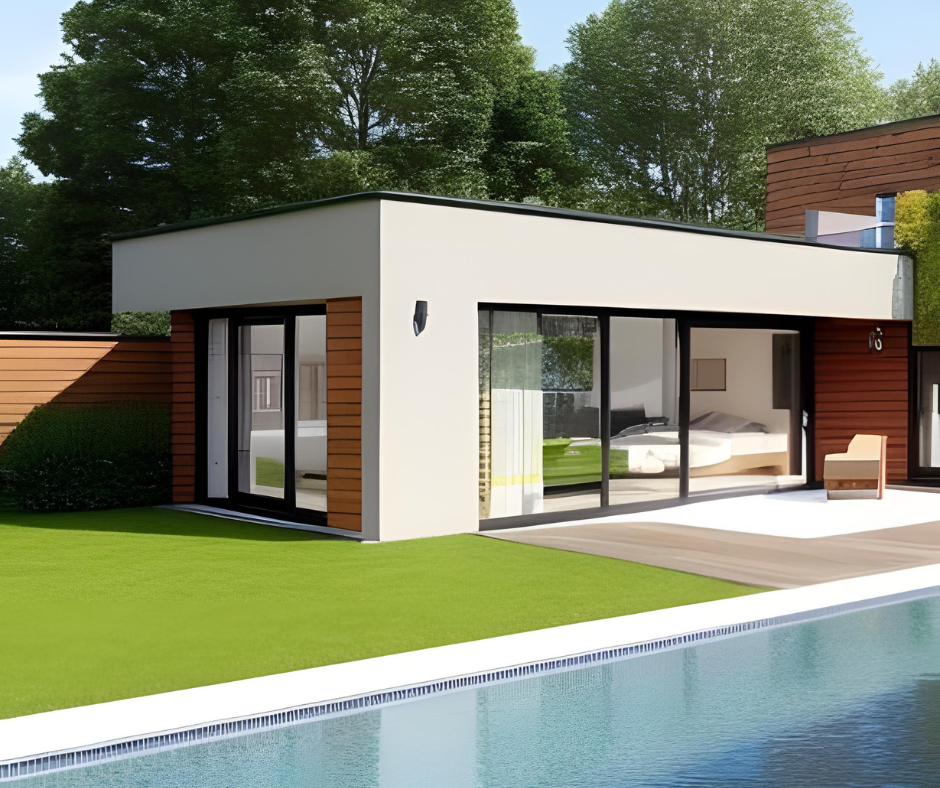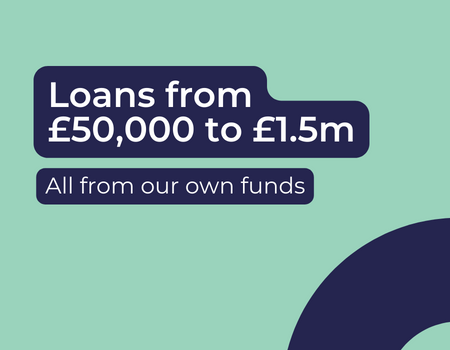Eco Friendly Property Development

Sustainable property development refers to the incorporation of environmentally friendly design techniques, materials, and technologies into the building process. This approach reduces a home’s carbon footprint, decreases operating costs, and reduces the environmental impact from both the construction and operation of a home. “Greenhabbing,” or “green” real estate development projects, place a strong emphasis on sustainable practices and materials.
This approach to real estate is not just a trend, but an entire movement growing in popularity. Consumers are increasingly demanding sustainable features in their homes, and as technology and materials advance, there are more opportunities than ever to incorporate sustainable features. This has implications for the future of the industry, and those investors implementing sustainable real estate development are likely to stay at the forefront of their industry and be more appealing to buyers.
Sustainability in real estate is also increasingly becoming an expectation from a regulatory perspective. With high consumption of natural resources and growing environmental awareness, authorities globally are taking measures to reduce resource use and decrease carbon footprints. The UK government and local councils are pushing for housing to meet sustainable and energy-conscious industry standards.
From an economic perspective, buildings certified under BREEAM and other similar sustainable building practices often command a premium price. Studies have shown that sustainable homes can sell for as much as nine percent more than less energy-efficient counterparts, and in some cases, up to 30 percent more.
The cost to build green buildings can be similar or only slightly higher than, the cost of traditional construction. Efficient design processes can reduce initial costs, and in some cases, green materials may cost the same or even less than conventional ones. Furthermore, tax breaks may be available for specific energy efficiency projects in buildings, and some states are introducing green building tax benefits.
Introduction to Eco-Friendly Property Development
Eco-friendly property development, also referred to as “green building,” is the practice of incorporating environmentally conscious design techniques, sustainable materials, and green technologies into the construction process. This approach to property development is increasingly significant due to its ability to reduce a property’s carbon footprint and enhance energy efficiency.
The demand for sustainable features in homes has shown a substantial increase, impacting the real estate market considerably.
Today, more consumers are not just desiring, but demanding eco-friendly homes. As such, the implementation of sustainable practices in property development offers a host of benefits, not just for the environment, but for property developers and homeowners as well.
Solar Power in Property Development
Solar power plays a crucial role in reducing a property’s carbon footprint and energy costs. Solar energy systems, such as photovoltaic panels, convert sunlight into electricity, providing a renewable and clean energy source for properties. This not only helps to minimise greenhouse gas emissions but also significantly cuts down on energy expenses.
Numerous property developments have successfully integrated solar power. For example, the Solar Settlement in Freiburg, Germany, is a residential community where every home is equipped with solar panels, generating more energy than they consume.
Green Roofs and Living Walls
Green roofs and living walls are innovative features that can significantly enhance the sustainability of a property. A green roof involves growing vegetation on rooftops, while living walls (also known as vertical gardens) are walls covered with greenery.
These features offer numerous benefits, such as improving air quality, providing natural insulation, reducing urban heat island effect, and enhancing biodiversity. In addition, they also create visually appealing spaces that enhance the overall aesthetic of the property.
Green roofs and living walls have been effectively incorporated in several eco-friendly property developments worldwide. For instance, the ACROS Fukuoka Prefectural International Hall in Japan features a spectacular terraced roof garden that seamlessly merges with a park, creating a verdant mountain in the heart of the city.
Incorporating Recycled Materials into a Development
Incorporating recycled materials into property development is a key aspect of eco-friendly building practices. The use of recycled materials not only reduces waste going to landfills but also minimises the need for the extraction of new resources.
Commonly used recycled materials in eco-friendly property development include reclaimed wood, recycled steel, and recycled glass. These materials can be used in various applications, from structural elements to finishes and fixtures.
Numerous property developments have showcased the successful use of recycled materials. For instance, the EcoArk Pavilion in Taipei, Taiwan, is an impressive building made from 1.5 million recycled plastic bottles, demonstrating the immense potential of waste materials in eco-friendly construction.
Water Conservation in Property Development
Water conservation is an essential aspect of eco-friendly property development. With freshwater resources becoming increasingly scarce, incorporating water-saving measures into property designs is more crucial than ever.
Water conservation in property development can be achieved in various ways, such as installing low-flow fixtures, implementing rainwater harvesting systems, and landscaping with drought-resistant plants. These techniques not only conserve water but also reduce water bills, providing economic benefits for property owners.
Green Building Certifications
Green building certifications such as the Leadership in Energy and Environmental Design (LEED) are internationally recognised standards for assessing the sustainability and energy efficiency of properties. These certifications evaluate properties based on various criteria, including energy usage, water efficiency, and materials used.
Earning a green building certification can significantly enhance a property’s value and market demand. According to a study by the University of California, homes with an ENERGY STAR, LEED, or Greenpoint Rated label sold for a higher price than those without such labels. Similarly, a study by the Earth Advantage Institute revealed that energy-efficient homes sold for as much as 30 percent more than non-energy-efficient homes. This suggests that green building certifications not only validate a property’s eco-friendly features but also contribute to its financial value and market attractiveness.
Geothermal Heating and Cooling
Geothermal heating and cooling systems are an innovative technology used in eco-friendly property development. These systems leverage the stable temperature of the earth to provide heating in the winter and cooling in the summer, offering an energy-efficient alternative to conventional HVAC systems.
While the benefits of geothermal systems are considerable, including significant energy savings and reduced carbon emissions, their incorporation into property development can be challenging due to high upfront costs and the need for significant space for installation.
Financing Green Developments
Financing eco-friendly property developments involves identifying funding sources that recognise and support the value of sustainable construction. These may include green loans, grants, tax incentives, and investments from entities interested in promoting sustainable development.
For example, in the USA, several federal tax credits are available for specific energy efficiency projects in buildings. Additionally, some states, including New York and Maryland, have introduced legislation establishing green building tax benefits
Transforming Urban Spaces into Sustainable Property Developments
Transforming urban spaces into sustainable property developments presents a unique set of challenges, including limited space, existing infrastructure, and regulatory constraints. However, with innovative design and planning strategies, these challenges can be overcome to create sustainable and liveable urban environments.
There are numerous examples of successful urban sustainable property developments. For instance, the Bosco Verticale in Milan, Italy, is a pair of residential towers that incorporate extensive greenery, including trees, shrubs, and floral plants, on their facades. This vertical forest not only provides residents with an extraordinary living environment but also contributes to biodiversity, absorbs CO2 and dust particles, and produces oxygen, demonstrating how urban spaces can be transformed into sustainable property developments.
FAQs
-
What is Eco-Friendly Property Development?
Eco-friendly property development, also known as “green building” or “sustainable real estate development,” incorporates environmentally-conscious design techniques, sustainable materials, and green technologies into the building process. This approach significantly reduces the carbon footprint of a property and can result in lower operating costs due to improved energy efficiency.
-
How Does Eco-Friendly Property Development Benefit the Environment?
Green property development benefits the environment in numerous ways. It minimises the use of natural resources during construction, reduces energy consumption during property operation, and can decrease the amount of waste produced over the property’s lifecycle. These green building strategies contribute to a reduction in greenhouse gas emissions, helping to mitigate climate change and protect natural ecosystems.
-
Are Eco-Friendly Properties More Expensive to Build?
While some may assume that eco-friendly properties are more expensive to construct, this is not always the case. Efficient design processes can often offset initial costs, and many green materials and products cost the same, or even less than, conventional alternatives. Furthermore, certain aspects of green building, like downsizing HVAC equipment due to improved building insulation, can lead to significant savings.
-
Do Green Buildings Command a Higher Market Value?
Yes, green buildings often command a higher market value compared to their traditional counterparts. Research shows that homes implementing sustainable building practices can sell for as much as nine percent more, and in some instances, up to 30 percent more than less energy-efficient homes. This value premium reflects the growing consumer demand for sustainable living and the long-term cost savings from energy efficiency.
-
Can I Get a Tax Break for Building Green?
In many cases, yes. There are federal tax credits available for specific energy efficiency projects in buildings. Moreover, an increasing number of states are establishing green building tax benefits, providing further financial incentives for sustainable real estate development.
-
What are Some Common Eco-Friendly Building Materials?
Eco-friendly building materials vary widely, reflecting the broad and evolving field of green construction. Some common examples include recycled steel, bamboo, cork, reclaimed or sustainably harvested wood, and low-VOC (volatile organic compounds) paints. These materials are chosen for their low environmental impact, durability, recyclability, and in some cases, their positive contribution to indoor air quality.
-
What is the Future of Eco-Friendly Property Development?
The future of eco-friendly property development looks very promising. With growing environmental awareness, advancing technology, and evolving consumer preferences, green building practices are becoming the standard rather than the exception. Developers implementing sustainable strategies are likely to remain at the forefront of the industry and meet the increasing demand for eco-conscious homes.
-
What are Some Examples of Green Technologies Used in Property Development?
Green technologies in property development span a wide range, from renewable energy systems like solar panels and wind turbines to water-saving devices like rainwater harvesting systems and low-flow fixtures. High-efficiency HVAC systems, advanced insulation materials, and smart home technologies for optimising energy use are also common. These green technologies not only contribute to environmental sustainability but can also significantly reduce operating costs over time.
You can call us on 01244 565095
Follow us on our socials
YouTube
Or click here to go to our main page: www.breezecapital.co.uk

